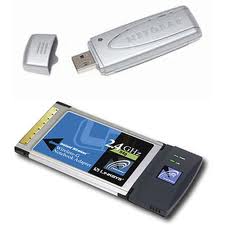

Image provided by geeksquad.com
The first piece of equipment that is crucial to the development of a home network is the router. With a router you are able to share your internet connection with all your devices connected to it. It also enables your devices to communicate with each other.

Image provided by ccpowerpc.com
Ethernet cables are far the better choice when it comes to connecting devices within your network. They are less prone to any type of conflict compared to a wireless connection. You also get faster speeds using Ethernet. The type of Ethernet cable that is currently widely available is the CAT5/CAT6. Speeds will vary with this type of cable and will also rely on the type of ports your router and device will have. They may range from 100Mbps to 1Gbps.

Image provided by howstuffworks.com
Wireless adapters come in different sizes, formats, specifications and so forth. This one pictured above is a PCI wireless card rated a G speeds. These speeds are rated 54Mbps. Most modern devices will now come equipped with some sort of wireless hardware already attached to them.

Image provided by shammas.eng.br.com
The hub is also an important device used to network devices together. The advantage hubs/switches have over routers is that they are able to connect a lot more devices simultaneously together. The downfall is that they are unable to connect to the internet unless used in conjunction with a router.